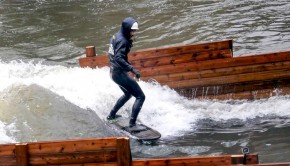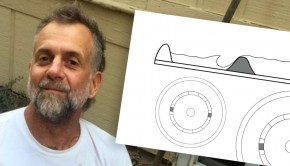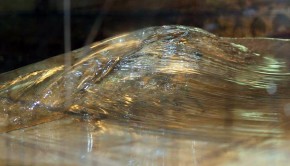Published on June 17th, 2013 | by RB Team
How a Wave Shaper Works
The construction of wave shapers is a science of its own. When it comes to building surfable waves in rivers, one of the most difficult tasks is to estimate the height, shoulders and width of the waves. Wave shapers are specific structures, e.g. concrete, wood, boulders, that help controlling the shape of artifical waves.
As flow rates and water levels vary, it’s important to understand how river waves actually form and how they behave at different models of flow in a given river. The scale model in the video shows how water flowing over the top of feature’s shape can change as the water flow increases.
What Is a Wave Shaper?
In its most basic form a wave shaper is a man-made structure that results in a standing wave. Water flows through a waves shaper and creates a structured play feature for surfers. In order to build the structure, the riverbed is first excavated by digging out a several feet area before filling it with a concrete slab to give a stable structure to construct the wave shaper on.
Adjustable Wave Shapers
Usually, the shape and the velocity of the water creating surfable waves rely on the amount of water in the river and the shape of the river bed. An adjustable wave shaper allows surfers to create the hydraulic shape that they want. Some modern whitewater parks have already put in place adjustable wave shapers: features that offers different types of waves, holes or combinations at one location. Slight adjustments of a wave shaper can change a wave into a green glassy wave or into whitewash (if you like).
















